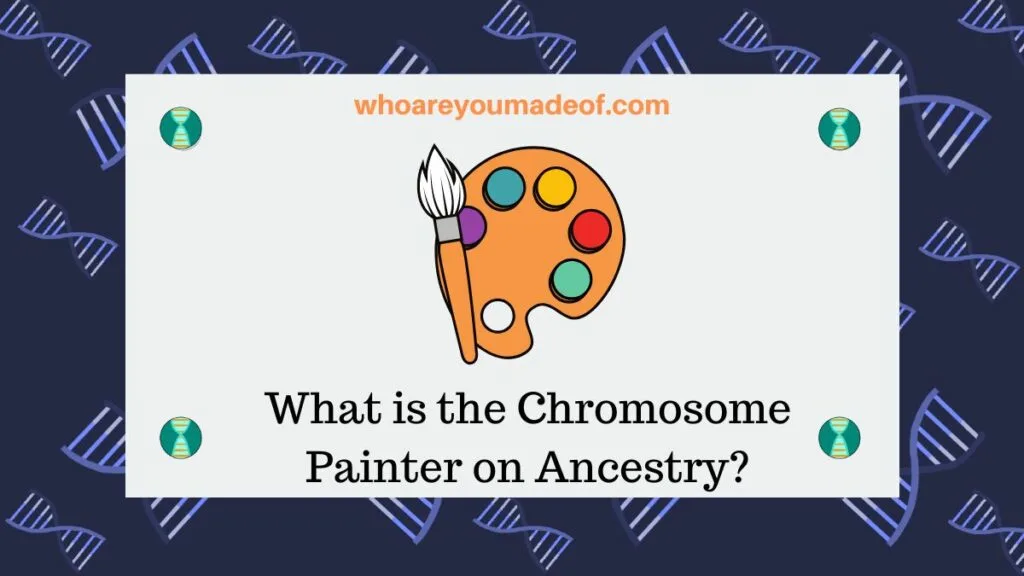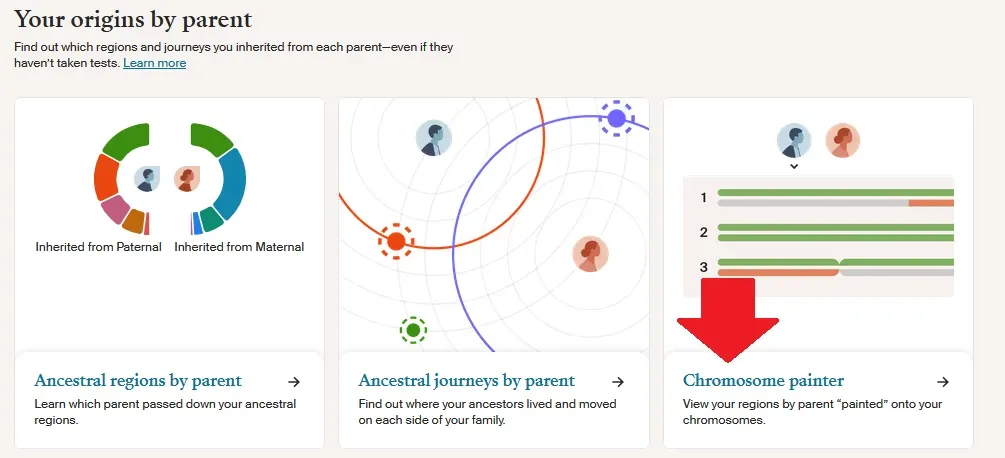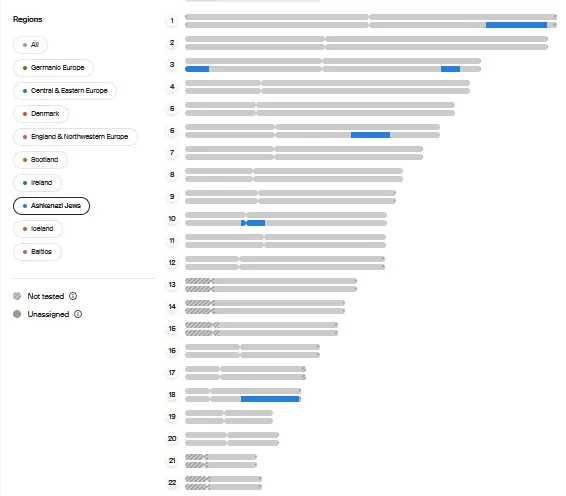The AncestryDNA Chromosome Painter feature is an exciting, useful tool that can help us learn more from our DNA results. Learn details about how to find and use this feature in this easy-to-read article.

I did my first DNA test with Ancestry back several years ago, and since that time, they have rolled out tons of new features that have helped me get more value from that initial test. The Chromosome Painter tool is just one of the many features that I’ve seen developed on Ancestry over time.
However, the Chromosome Painter is a really big deal for those of us interested in genetic genealogy. Being able to view our ethnicity inheritance on the chromosome level is going to be a game-changer for those of us trying to break through some of those tough family tree mysteries.
But I’m getting ahead of myself. Let’s get started learning the basics of this tool, shall we?
What is the Chromosome Painter on Ancestry DNA?
The Ancestry Chromosome Painter tool is a feature that leverages data from millions of DNA tests and family trees to visually display ethnicity inheritance on each copy of your 22 numbered chromosomes. This feature will help you learn the general location of DNA segments matching the ethnicity regions that show up on your Ethnicity Estimate.
In other words, we can now see ethnicity inheritance data at the chromosome level on Ancestry and we will know which parent corresponds to each copy of the chromosome. This is a really big deal, and I am very excited to be able to use this tool.
Just like with the SideView, or Ethnicity Inheritance by parent results, we can see the Chromosome Painter information even if our parents have not tested their DNA. This is a huge benefit to those Ancestry users who have not been able to have their parents take a test.
As I have mentioned before in my writing about the SideView technology and how to understand your results, this is beneficial even to those of us who have had our parents or grandparents take tests to further our family tree research. With the Chromosome Painter tool, we will now be able to identify exactly through which lines of our tree we inherited specific DNA ethnicity regions.
Do you need an Ancestry subscription to see the Chromosome Painter?
In order to access your Ancestry Chromosome Painter results, you will need to have an active Ancestry subscription. This is one of a few features that have recently been added to the members-only Ancestry DNA experience.

How to find your Chromosome Painter results?
Anyone who has tested their DNA with Ancestry can log in to their Ancestry account and see their Chromosome Painter results on their Origins report.
On your ancestral Origins page, click on the "By parent" tab to view your Chromosome Painter results. It should appear in the section just below your name on your main DNA results page.

On the next screen, you click on the "Chromosome Painter" box to use the feature. Once you click on the tool, you will be taken to a new page where you can explore all of the aspects of this feature.

There are currently three main functions of the tool. Conceivably, there will be more advanced features developed over time, but for now you can:
- Adjust the filter on your Ancestry Chromosome Painter to view only the specific ethnicity regions on the chromosomes where it is found
- Filter your results to only show one parent (i.e. Parent 1 or Parent 2)
- If you manage the results of more than one person, you can flip between test results directly from this screen
For example, I know that I inherited DNA matching the Ashkenazi Jewish region from my mother. In fact, my SideView results helped me discover that this DNA was passed down from my maternal grandmother to my mother, and then to me.
However, with the Chromosome Painter, I can now see exactly which DNA segments on my mother's chromosomes actually match this region. You can see this for yourself in the image below:

To filter out only the DNA segments on my mother's chromosomes that match the Ashkenazi Jewish, I clicked on that region and then all of those segments were highlighted in purple. As you can see in the image above, my mother has segments of her DNA that match the Ashkenazi Jewish on Chromosome 1, 3, 6, 10, 12, and 18.
To learn more about how to use this information, you might like this post about how to understand the ethnicity inheritance on the Chromosome Painter.
The Chromosome Painter is an exciting tool, but to understand what we are seeing when we use it, we do need to venture into the more intermediate genetic genealogy topics.
How to know who is Parent 1 and Parent 2 on Chromosome Painter?
While Ancestry's software is able to figure out how to sort your chromosome copies into two groups (for your two parents), it is up to us to figure out which parent is our mother and father. Fortunately, many people will be able to easily make this determination by examining the main Ethnicity Inheritance, or SideView, results.
Conclusion
I hope that this post about the Ancestry Chromosome Painter has helped you understand how to find and interpret your results, and how to use this information to learn more about your ancestry on both your maternal and paternal lines.
It’s a really very exciting development, and we are only now able to begin learning how to fully leverage this feature for genealogy.
If you have any questions about something that you read in this post, or if you would like to share something that you learned from using this feature, I would love to hear from you in the discussion below.
Thanks for stopping by and reading today!

Joy
Sunday 7th of July 2024
The one thing I never see addressed is the significance of each chromosome. That is, what is that chromosome passing along? Or is that random, as well? Is each chromosome associated with particular genes (e.g. Chromosome 22 is X or Y)? From 1 to 22, the chromosomes become smaller and smaller. Is there any significance to the size of the chromosome? If so, what? Or don't we know?
Eli
Wednesday 3rd of August 2022
Hi! I’ve found your articles very useful and easy to understand as I’ve made the move from pure family tree / genealogy research to taking a dna test and navigating ethnicity estimates etc. my question is, with the chromosome painter, it shows my 21% Danish Swedish ethnicity estimate as a pretty much unbroken blocks on many of parent 1’s longest chromosomes including 1, 3 and 5 and in other chromosomes all unbroken. From my reading this all suggests more recent ancestry however the ethnicity estimate range includes 0% and this parent was born in the Netherlands and their family tree goes a long way back for most (not all) blood lines but all Dutch or German. Basically I cannot see any sign of Danish or Swedish in the tree yet the large unbroken blocks of Danish Swedish chromosome suggest otherwise. I should point out that my ethnicity estimate also has a high percentage of Germanic Europe which would cover the known Dutch and German lines but keen for your insight. Is the Swedish Danish likely really the same as the Dutch/German? Thank you.